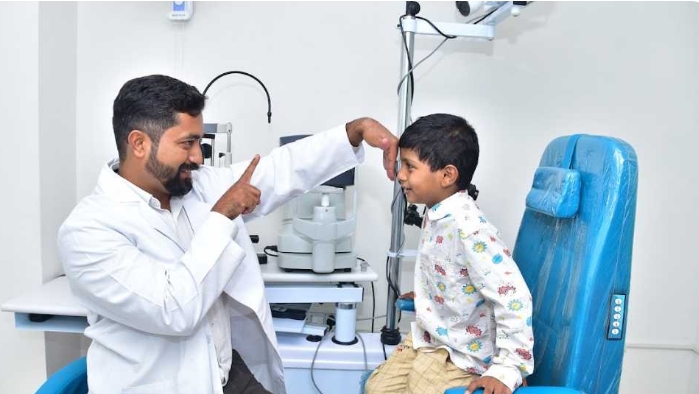Nashik: 7499839439
Ghoti: 8237962176
Deals with eye problems in children. Children may not complain if they do not see out of one or both eyes. Sometimes the only clue may be poor performance in school as well viewing the blackboard at a very close distance. Hence all children need regular eye checkups at the time of starting school and right through their school years. Of the many eye problems in children, the most important are refractive errors, squint and amblyopia. Adult patients suffering from squint and double vision are also examined and treated effectively.
1) Paediatric refractive error management
2) Amblyopia management
3) Squint correction surgeries
4) Paediatric cataract surgeries

Why a separate Paediatric Ophthalmology Clinic?
Because the type of eye diseases that affect children are unlike those affecting adults and treatment methods required for children are also quite different. Moreover, eye specialists for children are distinctive and trained especially for their treatment.
Many times children don’t complain if they have an eye problem as they don’t understand and many times parents do not take their complaints seriously as they think that the child is complaining for attention seeking.
Many parents feel that an eye examination can’t be done till the child learns to start reading.
But a pediatric ophthalmologist is trained to perform an objective examination of the child’s eye and detect any eye problem or refractive error even without any input from the child.
When should I take my child for an eye check up?
Ideally a routine examination should be performed by a pediatrician when the child is born and then at least two routine eye examinations should be performed by a Pediatric Ophthalmologist first, when the child is around 2-3 years and the again at the age of 5 years before the child starts formal school
A child should go for an eye checkup if the following symptoms are noticeable
- Crossed eyes.
- Keeps object close to his eyes.
- Not being able to see the blackboard at school.
- Things looking blurry or funny.
- Feeling an itching, burning or scratchy sensation in the eyes.
- Injury to the eye.
- One or both the parents wear glasses.
What are the Common Eye Diseases in children?
Refractive errors, Lazy eye disease, Eye injuries, Squinting of eyes, Watering from the eyes, Eye allergies.
Squint Clinic
When both the eyes of a person are not in alignment with each other it is known as squint or strabismus. Nearly 40% patients with squint can be cured by spectacles and/or eye exercises. However, a large majority require an operation. Squint operations are very safe and should be done at the earliest. Generally if the eyes are not aligned for more than 6 months in a child, irreversible damage to the three dimensional vision occurs, which is only partly reversible. Squint surgeries are performed successfully even in 4 month old children. If surgery is required it should be done in most cases within six months after the squint is noticed to avoid any irreversible damage to three dimensional vision.
